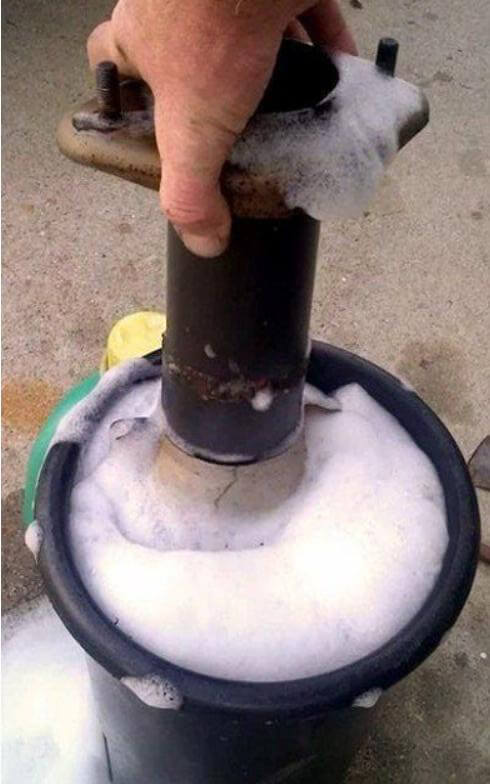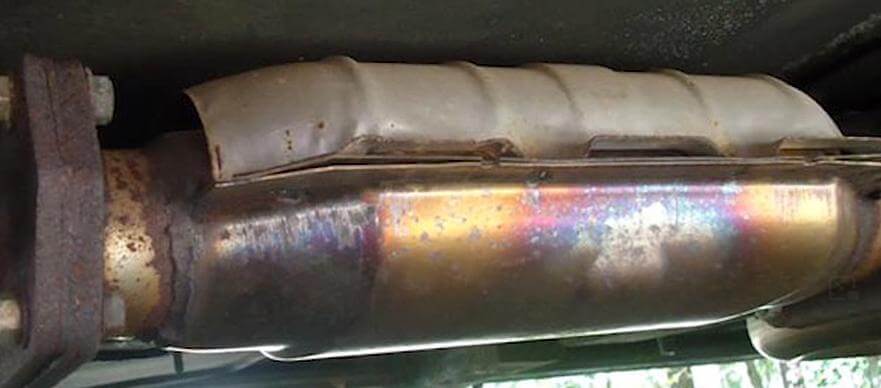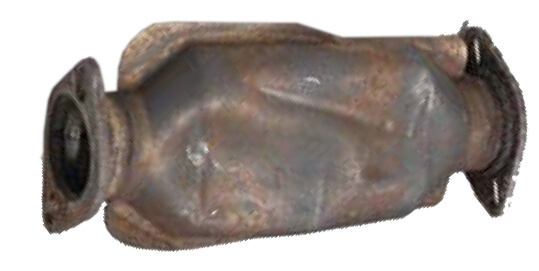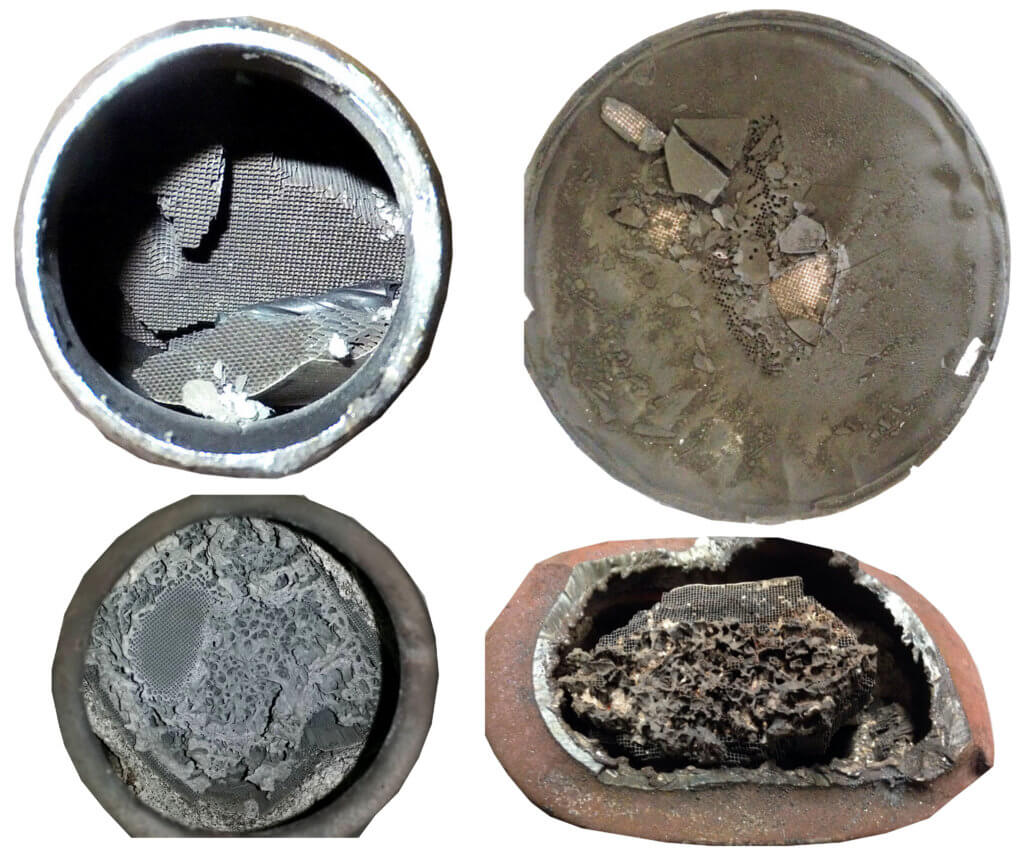Clean a catalytic converter
Can you clean a catalytic converter?
You might be able to clean a catalytic converter — BUT
Lots of companies sell catalytic converter cleaners and you may be tempted to buy them so you can get rid of the check engine light and pass an emissions test. Before you buy a converter cleaner understand that catalytic converters fail in three ways: Thermal damage, Poisoning, Impact/cold shock damage. Catalytic converter cleaners can’t fix thermal damage or impact/cold shock damage
Thermal damage can’t be fixed with a catalytic converter cleaner
A converters job is to burn off any hydrocarbons in the exhaust. But if there’s too much unburned fuel or unburned oil due to misfires, internal leaks, or worn piston rings, the converter will heat up beyond 1,500-2,000°F. At that point, the metals and cell structure will melt, clogging the cat. NO CLEANER can EVER fix that. Once a converter has suffered thermal damage, it is permanently damaged and must be replaced.
Catalytic converter cleaner MIGHT possibly fix a poisoned converter, but only if you do this first.
Excess hydrocarbons from rich fuel trims, misfires, internal oil leaks, internal coolant leaks coat the surface area of the converter cells, rendering the converter ineffective. Some cleaners can remove some of the coating, BUT, if you haven’t fixed the root cause of the poisoning, those areas will simply recoat and set a check engine light again.
In other words, catalytic converter cleaner products will never fix the underlying problem that caused the converter to fail in the first place. They’re a band-aid that will only work temporarily, if they work at all.
Catalytic converter cleaner will never fix converter impact damage or cold shock damage
The ceramic brick inside the catalytic converter can be damaged by impact (speed bumps, driving over a curb, or hitting something on the road). Once the brick is broken, the exhaust flow is reduced and NOTHING can fix that damage. In addition to impact damage, converters can be damaged by splashing in cold water (pretty rare unless you’ve removed the heat shield). That cold shock shatters the brick and that is permanent damage that can’t be fixed by using a catalytic converter cleaner.
How can you tell if your vehicle is a candidate for catalytic converter cleaner?
Perform a visual inspection of the converter
If the converter is purple or blue and you less power, hard starting, lower MPG, the converter has overheated and cat cleaner will not work. The converter must be replaced. Cat cleaner can’t un-melt an overheated converter. Don’t even waste your money.
Tap the converter with a rubber mallet to detect brick damage
Using a rubber mallet, tap the converter to detect rattling sounds that would indicate a shattered ceramic structure. If you hear rattling, the converter has broken apart and cat cleaner will not work. Don’t waste your money.
If the converter passes visual inspection, check these items before adding a cat cleaner product
Check for other trouble codes
Codes P0150-P0160 indicate oxygen sensor issues.
Codes P0170-P0179 indicate air/fuel issues
Fix these codes first or you’re wasting your time on converter cleaners
Check for an internal coolant leak if you’ve been losing coolant
If you’ve been adding coolant and performed a cooling system pressure test and found no external leaks, chances are you have an internal leak. Coolant leaking into the cylinder can coat the surface of the brick, poisoning the cat. Some cleaners can remove the coating. But if you don’t fix the internal coolant leak, it will recoat and set a code again.
Check short and long-term fuel trims using a scan tool
If your long-term fuel trim value is above 10%, you’ve got a serious air/fuel issue. That’s probably what caused your converter issue. If you don’t fix it and you use a cat cleaner product, the trouble code will re-appear.
High fuel trims are usually caused by vacuum leaks, air duct leaks between the air filter box and throttle body, or clogged fuel injectors.
Fix high long-term fuel trims first or you’re wasting your time with converter cleaners.
Check for internal oil leaks
If you’re constantly adding oil to your engine, you have either an external leak, or you’re burning oil. If you’re burning oil and don’t fix the underlying cause, the converter will recoat and set a check engine light again.
Fix oil burning first or you’re wasting your time with converter cleaners.

Don’t use the Scotty Kilmer method
Youtuber Scotty Kilmer recommends removing the converter from your car and soaking it overnight in a bucket of laundry detergent. That will remove soot, and some contaminants from the surface of the cells.
But you’ll still have a check engine light and you’ll still have to fix the underlying problem that caused the poisoning in the first place
©, 2021 Rick Muscoplat
Posted on by Rick Muscoplat


